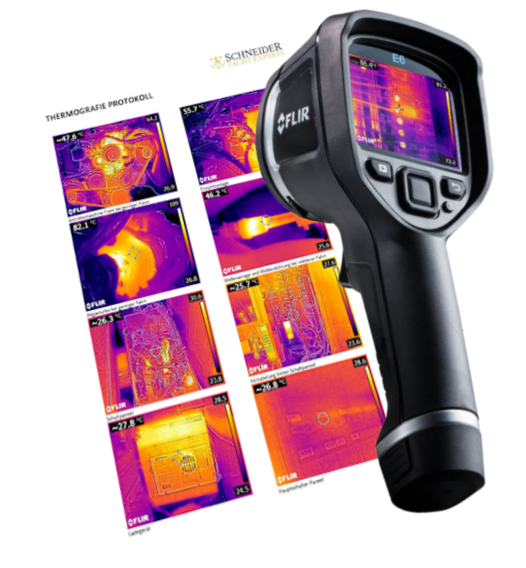Yacht appraisals – Thermography
We make visible
what is hidden from the eye
The use of thermographic imaging techniques has successfully established itself in many areas of industry as part of non-destructive material testing.
After numerous practical tests and trials with various material samples, we have decided to use this technology as a standard procedure for our inspections.
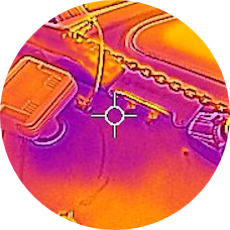
Identification
of laminate damage
Also with active thermography if required
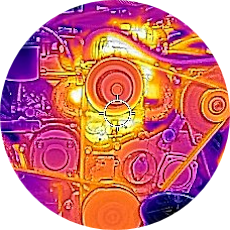
Check
of machines
To check the cooling capacity
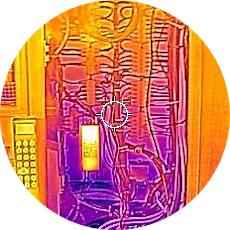
Electrical
system
Checking cables and components
Identification of laminate damage
on GRP boats
Like any other material used in yacht building, GRP is also subject to a certain ageing process and is exposed to different environmental influences depending on the area of use.
How well a boat can withstand these influences depends on various factors, such as the quality of the gelcoat, the laminate structure or the resin system used.
Cracks in the gelcoat or poorly installed through-hulls and hatches can cause water to penetrate the laminate, which can lead to delamination and thus weakening of the hull structure.
But even without external influences, every gelcoat or topcoat is porous to a certain extent and thus allows moisture to penetrate.
With the help of a thermal image scan, we can check the hull and superstructure for suspicious anomalies, using active thermography methods if necessary.
Inspection of machinery
and drive train
The engine system is the heart of every yacht and also a crucial safety system on board.
This makes it all the more important to ensure that it is always fully operational.
Clogged seawater filters, porous impellers or corrosion damage to heat exchangers and cooling lines can quickly lead to a reduction in cooling capacity and expensive damage.
In addition, the failure of an engine can also mean the failure or (in the case of twin engines) at least a severe restriction of maneuverability, which can pose a danger to the entire crew, especially in bad weather conditions.
Through a precise thermal analysis of your machine system, we can localize suspicious components and suggest preventive maintenance or repair measures in good time.
Review
of electrical systems
Modern high-performance accumulators undoubtedly have their advantages.
Long stays in the bay are possible even without constant operation of the generator and the fridges reliably supply refreshing drinks.
At the same time, however, charging and battery management systems are becoming increasingly complex and can also pose an increased fire risk if not properly maintained.
In older boats, corroded cables or connectors are also regularly found, which also represent a potential damage or latent safety risk that should not be underestimated.
Regular thermographic inspections of electrical systems can localize any overheating problems and prevent potential problems.
Thermography for yacht appraisals
Application examples
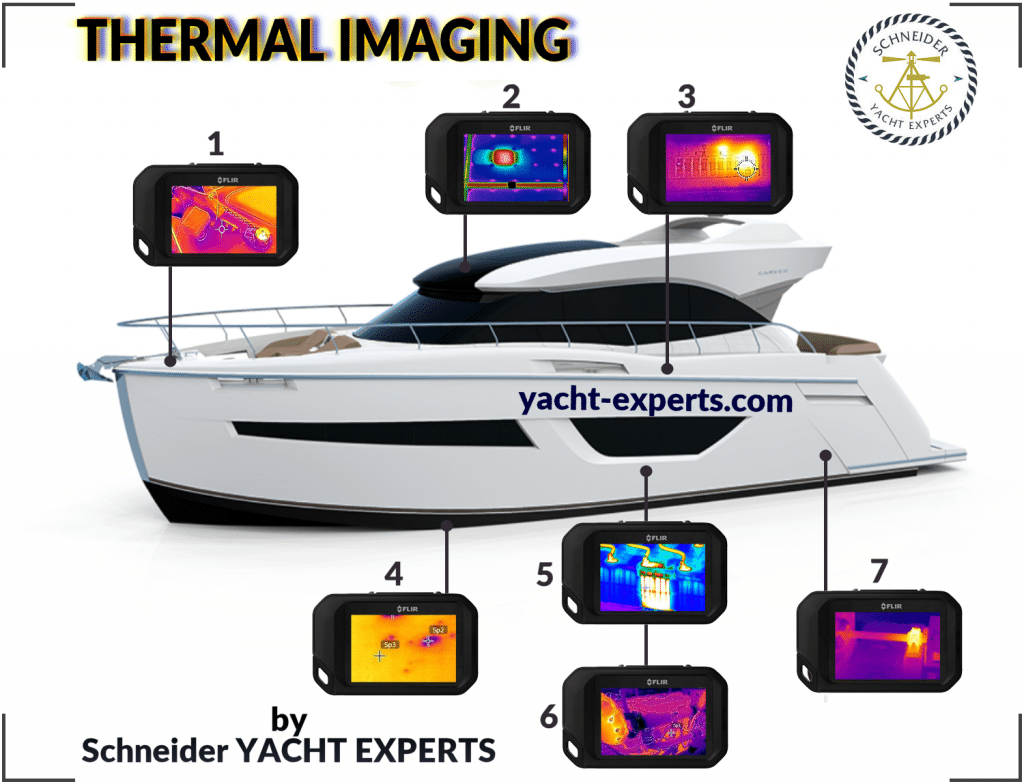
Identification of laminate damage
Soaked sandwich core in the area of the anchor box
Electrical system: Solar panels
Defective cell on a solar panel
220 V shore power system
Overheating on an RCD
Osmosis inspection
Identification of osmosis damage using active thermography*
DC on-board system
Overheating on a consumer battery
Machine system
Testing the engine and exhaust system
Drive train
Overheating on a shaft bearing
*The use of active thermography methods is not part of standard reports and can only be calculated on an individual or order-related basis due to the high effort involved.
The fastest way to your personal quote
With our online inquiry form, you can easily and conveniently obtain your personal quote for a pre purchase yacht survey.
Simply enter the boat data and the berth and select the desired scope of the inspection.
We will then send you a binding offer within 2 working days, including any travel expenses.
